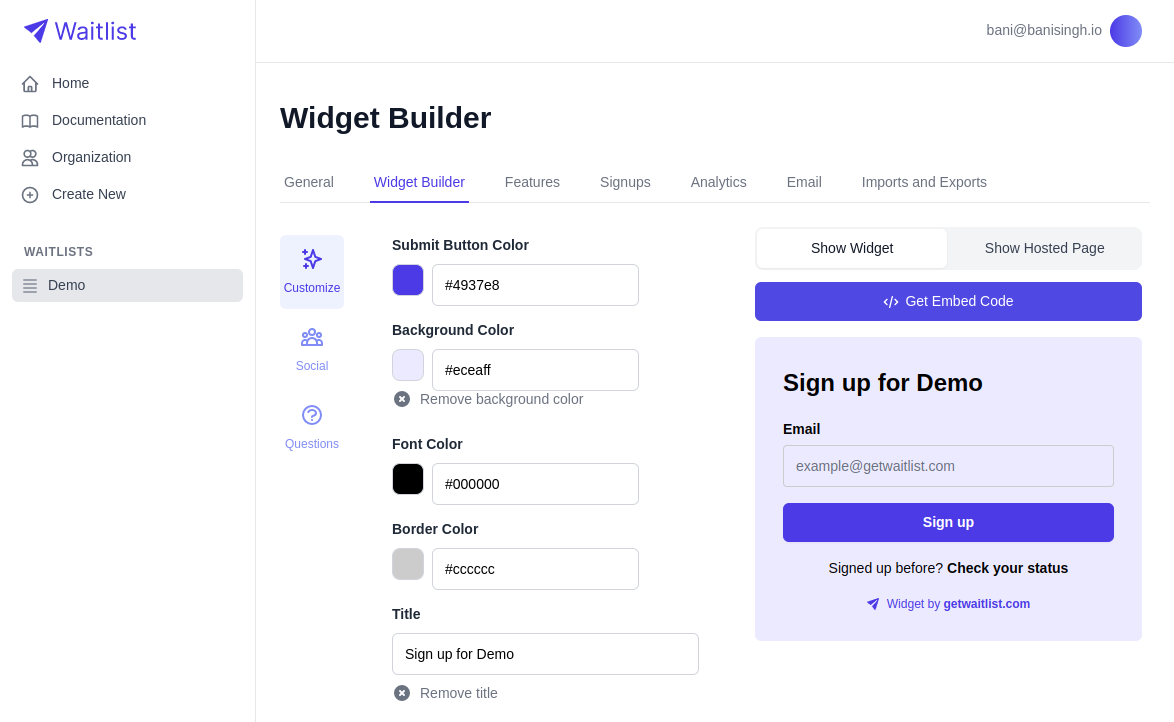Ever wonder why some waitlists explode to 50,000+ signups while others plateau at 50?
It's not about having a better product or bigger marketing budget. It's about understanding psychology.
The companies with viral waitlists know that people's motivations change as a waitlist grows. What works to get your first 100 signups won't work to get your next 10,000.
Here's the 5-stage psychology framework behind every successful viral waitlist.
Why Psychology Matters More Than Features
Before we dive into the stages, let's talk about why psychology is so important for waitlists.
Scarcity creates desire: People want what they can't have immediately. A waitlist makes your product feel exclusive.
Social proof drives action: When people see others joining, they assume it must be worth joining too.
FOMO is powerful: The fear of missing out is psychologically stronger than the desire to gain something.
Commitment leads to conversion: Once someone joins your waitlist, they're more likely to become a customer.
The key is applying the right psychological triggers at the right stage of growth.
The 5 Stages of Waitlist Psychology
Stage 1: The Curiosity Hook (0-50 Signups)
What's happening: You're fighting for attention in a noisy world.
Psychology: Intrigue and initial interest
What works:
- Mystery positioning (don't reveal everything immediately)
- Problem agitation (remind people of their pain points)
- Founder credibility (leverage your experience or endorsements)
Example: "The productivity method that made one founder 10x more efficient (launching soon)" vs. "Join our productivity app waitlist"
Success signs: 10-20% conversion rate, people spending 2+ minutes on your page, organic social shares starting to appear.
Common mistakes: Revealing too much detail (kills curiosity), generic value props, no clear next step.
Stage 2: Social Momentum (50-500 Signups)
What's happening: You have enough signups to start leveraging social proof.
Psychology: Bandwagon effect and peer validation
What works:
- Live signup counters
- Social proof notifications ("John from San Francisco just joined")
- Peer positioning ("Join 247 other founders building the future")
Examples:
- "🔥 127 product managers joined in the last 24 hours"
- "Join 1,247 other SaaS founders getting early access"
Pro tip: Always round numbers down (1,247 not 1,250) for authenticity. Use specific timeframes ("in the last 24 hours").
Success signs: 15-25% conversion rate, 10-15% referral rate, time between signup waves decreasing.
Stage 3: The Viral Engine (500-5,000 Signups)
What's happening: This is where waitlists often stagnate or explode. You need systematic sharing.
Psychology: Reciprocity and gamification
What works:
- Clear value exchange for referrals
- Progress gamification (visual progress toward goals)
- Status recognition (acknowledge top referrers)
Referral structure example:
- 3 referrals: Move up 1,000 spots
- 10 referrals: Guaranteed beta access
- 25 referrals: Lifetime discount
- 100 referrals: Exclusive founder dinner
Social sharing psychology: Make it feel like helping, not selling.
"Help your friends skip the line" vs. "Refer friends to move up"
Success signs: 25-40% of users make at least one referral, viral coefficient above 1.2, 15-30% week-over-week growth.
Stage 4: Community Building (5,000-25,000 Signups)
What's happening: Individual actions matter less than community dynamics.
Psychology: Belonging and insider status
What works:
- Exclusive community access (private Slack, Discord, or Circle)
- Behind-the-scenes content and founder AMAs
- Member spotlights and user-generated content
- Milestone celebrations that feel like shared achievements
Example: "Welcome to the Founders' Circle - weekly founder AMAs, private community, early feature voting, behind-the-scenes updates"
Milestone messaging: "We just hit 10,000 members! Here's what this means: development accelerated, new features planned, exclusive 10K rewards unlocked"
Success signs: 30%+ community engagement, organic social mentions increasing, press coverage beginning.
Stage 5: Market Authority (25,000+ Signups)
What's happening: Your waitlist becomes news itself.
Psychology: Authority and market validation
What works:
- Position as industry movement ("Join 50,000+ professionals revolutionizing [industry]")
- Leverage media coverage and press mentions
- Intensify scarcity ("Warning: limiting beta access to first 1,000 members")
Authority positioning: "The waitlist that's reshaping how [target audience] works"
Success signs: Media mentions, industry influencer engagement, inbound sales inquiries.
Common Psychology Mistakes That Kill Growth
Using wrong psychology for your stage: Claiming "50,000 members" when you have 47 signups destroys credibility.
Focusing only on gains: "Sign up for early access" vs. "Don't miss your chance for early access." Loss aversion is more powerful.
Fake social proof: Inflated numbers or fake testimonials. People can tell, and it destroys trust.
Static value proposition: Your messaging should evolve as your waitlist grows. What works for 100 people won't work for 10,000.
Making the Transitions
Stage 1 to 2: You need consistent daily signups and initial organic shares.
Stage 2 to 3: Conversion rate stabilizes above 15% and you see first viral sharing.
Stage 3 to 4: Sustained viral coefficient above 1.0 and users requesting community features.
Stage 4 to 5: External validation (press, partnerships) and competitor responses to your momentum.
Putting It All Together
The companies that grow waitlists from 50 to 50,000 understand they're not just building a list—they're orchestrating a psychological journey.
Key principles:
- Match psychology to stage: What works for 100 signups won't work for 10,000
- Build authentic social proof: Real numbers always beat fake ones
- Create progressive value: Increase exclusivity as you grow
- Focus on community: Eventually, your waitlist becomes a movement
Example of evolution:
- Stage 1: "Early access"
- Stage 2: "Join 500+ founders"
- Stage 3: "Founding members program"
- Stage 4: "Pioneer community"
- Stage 5: "Industry insiders"
Getting Started
Look at your current waitlist and honestly assess which stage you're in. Then implement the stage-appropriate psychology tactics above.
Remember: psychology is powerful, but it must be authentic. The best waitlists don't manipulate people—they understand what people naturally want and provide it in compelling ways.
The difference between waitlists that plateau and those that explode isn't luck or timing. It's understanding human psychology and applying it systematically as you grow.
Master this framework, and you'll have the foundation for waitlist growth that compounds rather than stagnates.
